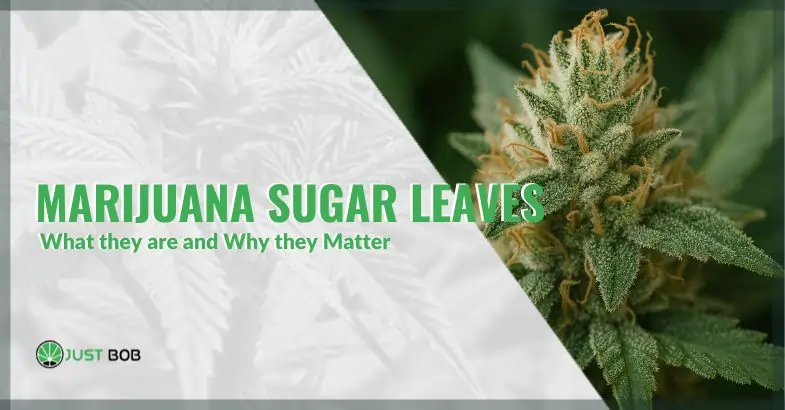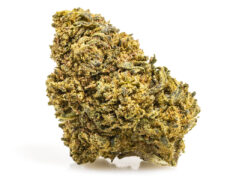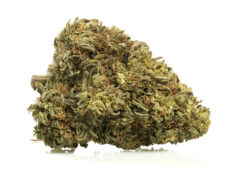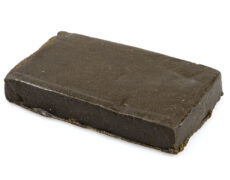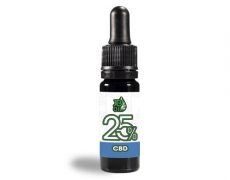Published on: 25/06/2025
An Introduction to These Small, Resin-Rich Leaves
Every single component of cannabis, from the stem to the roots, from the seeds to the flowers, has unique characteristics and performs specific functions that contribute to the life cycle and overall profile of this much-debated and studied species. Among these parts, often less known to the general public but of great interest to growers, researchers and botany enthusiasts, are the so-called sugar leaves.
This colloquial but now widely used term refers to the small leaves that emerge directly from the female inflorescences of the plant, commonly known as buds or buds. Unlike the larger, more easily recognisable fan leaves, sugar leaves are distinguished by their proximity to the flowers and, above all, by their tendency to become covered with a sparkling layer of resinous glands, known as trichomes.
It is precisely this crystalline coating, similar to icing sugar, that gives them their evocative name and determines their importance.
Although often considered a by-product of the trimming process (the cleaning of the buds), these small leaves are anything but inert. In fact, they contain a concentration, albeit variable and generally lower than that of the flower calyxes, of cannabinoids and terpenes, the compounds that define the chemical and organoleptic properties of the plant. Understanding the nature, function and potential uses of sugar leaves is therefore essential for a thorough knowledge of cannabis.


Recognising Sugar Leaves: Appearance, Position and Variability
Correctly identifying sugar leaves requires a keen eye for the details of the floral anatomy of cannabis.
Their most obvious feature is their small size compared to fan leaves; they are small leaves that literally sprout between and from the clusters of flowers that make up the bud. While fan leaves branch off from the branches and main stem with their classic long petiole and multi-fingered palm shape, sugar leaves often have a very short or almost non-existent petiole and a simpler shape, sometimes lanceolate or single-pointed, almost enveloping the base of the flowers.
Their position is therefore intrinsically linked to the structure of the bud: they are not structural leaves for capturing light on a large scale, but rather components integrated into the inflorescence.
The most distinctive visual element, however, remains the trichome coverage. Under a magnifying glass or microscope, they appear as small translucent or amber mushrooms, densely distributed on the leaf surface, especially the upper surface. This abundance of trichomes makes them sticky to the touch and gives them that ‘glazed’ or sugary appearance.
It is important to note that there is considerable variability in the appearance and density of sugar leaves depending on the genetics (strain) of the plant and the environmental and growing conditions. Some varieties produce very dense buds with few protruding sugar leaves, while others have a more open structure with more numerous and visible leaflets.
The amount of resin can also vary dramatically. These differences are of great interest to collectors and researchers, as they provide clues about the genetics and potential chemical profile of the plant, making each specimen a unique piece to study and catalogue.
Read also: Mature trichomes? Here’s how to figure it out for sure
Sugar Leaves vs Fan Leaves: Functional and Aesthetic Distinctions
Understanding the difference between sugar leaves and fan leaves, beyond what has been explained so far, is not just a matter of botanical nomenclature, but has significant practical implications, especially during the cultivation and post-harvest stages.
Fan leaves are the true photosynthetic engines of the plant. Large, broad and fan-shaped, they are strategically positioned to maximise exposure to sunlight or artificial light.
Their primary function is to convert light energy, water and carbon dioxide into sugars (energy) to fuel the growth of the entire plant. They contain high levels of chlorophyll, which gives them their intense green colour, but are generally low in trichomes and, as a result, their concentration of cannabinoids and terpenes is negligible or very low. For this reason, they are almost always removed completely during pruning (trimming).
Sugar leaves, on the other hand, although they contain chlorophyll and contribute minimally to photosynthesis due to their often shaded position within the bud, seem to play a role more related to protecting the delicate reproductive organs of the flower (calyxes, pistils) and producing secondary compounds.
Their distinctive feature is, as already mentioned, their abundance of trichomes. Although the density of these resinous glands is typically lower than that of the flower calyxes, it is significantly higher than that of the fan leaves. This difference is crucial: it makes sugar leaves a secondary, but not insignificant, source of cannabinoids and terpenes.
From an aesthetic point of view, even in final products intended for collection or technical use such as CBD buds, the presence of sugar leaves is a matter of debate: some prefer perfectly ‘manicured’ buds (without leaves), while others appreciate the presence of small, resin-rich sugar leaves as an indicator of less aggressive processing. The handling of these leaves during trimming affects the appearance, aroma and potentially the preservation of the final product, which are important aspects for those seeking high-quality botanical material.
The Crucial Role of Trichomes in Sugar Leaves
Understanding the role of trichomes is essential to understanding why sugar leaves are considered important.
Trichomes are not simply ‘hairs’ or superficial decorations; they are complex glandular structures, veritable biochemical micro-factories that the plant develops mainly on the flowers and adjacent leaves (the sugar leaves, in fact).
There are different types of trichomes on cannabis (bulbous, sessile, capitate-pedunculate), but the most interesting ones are the capitate-pedunculate trichomes, which are the largest and richest in compounds, recognisable by their mushroom shape with a globular head supported by a stem. It is inside this head that the biosynthesis and accumulation of cannabinoids (such as THC, CBD, CBG, etc.) and terpenes (limonene, pinene, myrcene, etc.), as well as other flavonoids and minor compounds, takes place.
The primary biological function of trichomes is defensive: the sticky resin traps small insects, the bitter taste discourages larger herbivores, and the compounds it contains can have antifungal and antibacterial properties and protect against harmful UV rays and dehydration.
On sugar leaves, the density and maturity of the trichomes are key indicators of chemical potential. By observing their colour (from transparent to milky/opaque to amber), it is possible to draw conclusions about the stage of maturation of the compounds contained, a fundamental aspect for phytochemical research and for the standardisation of extracts for technical use.
Although, as mentioned, the overall concentration is lower than that of flowers, the presence of a complete trichome profile makes sugar leaves a valuable material for comparative studies between different varieties or for analysing the influence of cultivation techniques on resin production. This biochemical richness, although secondary, should not be underestimated.
Harvesting and Trimming: Optimal Management of Sugar Leaves
Harvesting marks the beginning of a crucial phase: post-harvest processing, which includes drying, curing and, of course, trimming or manicuring. The management of sugar leaves during trimming is a decision that significantly impacts the quality and appearance of the final product.
The main choice is between wet trimming and dry trimming.
Wet trimming is performed immediately after cutting the plant, when the leaves are still hydrated and turgid. This makes the sugar leaves easier to spot and cut precisely using special scissors, resulting in very clean and defined buds. However, it can be a longer and stickier job due to the fresh resin.
Dry trimming, on the other hand, is done after an initial drying period (usually 7-14 days), when the leaves have shrunk and become more fragile. Although it may better preserve some volatile terpenes during drying (as the outer leaves create a kind of protective microenvironment), it makes it more difficult to remove the sugar leaves without damaging the flowers, and the leaflets tend to crumble.
The choice between the two methods depends on the grower’s preferences, environmental conditions and intended end use.
How much to cut?
Some meticulously remove every protruding leaf fragment to maximise visual appeal and reduce plant material that could affect the aroma. Others prefer less aggressive trimming, leaving the smaller, inner sugar leaves intact, especially if they are well covered with trichomes, believing that they contribute to the overall profile. The material resulting from trimming, known as ‘trim’, consists mainly of sugar leaves and small fragments of flowers. It is a valuable biomass, rich in trichomes, and should not be considered waste, but rather a secondary raw material of great interest.
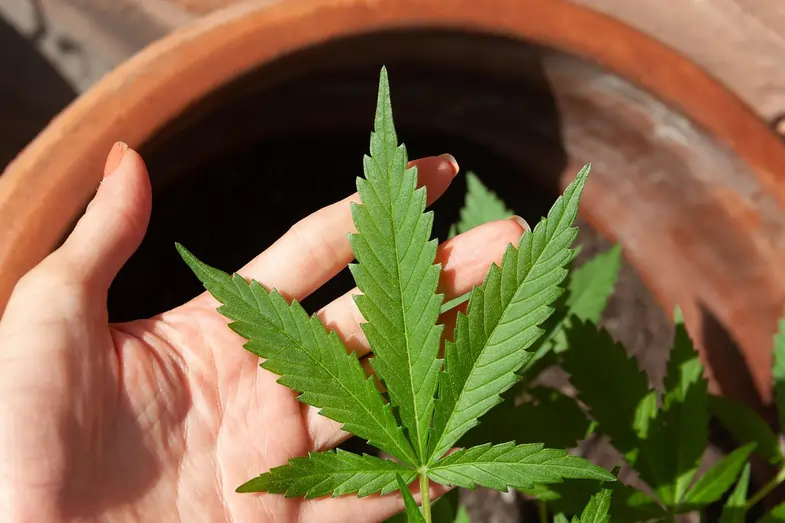

Potential Uses of Sugar Leaves (Technical Use, Collecting and Research)
Sugar leaves and the trim derived from their removal, thanks to the significant presence of trichomes, open up a range of interesting uses, especially in contexts not related to direct consumption or where this is not permitted.
A primary application is in the field of botanical collecting. Enthusiasts and scholars can preserve samples of sugar leaves to document the morphological characteristics of different varieties (cultivars), analyse their structure under a microscope, or create comparative herbariums. This allows the biodiversity of cannabis to be appreciated and reference material to be preserved.
From a technical and research point of view, sugar leaves are an accessible source of cannabinoids and terpenes. In countries and legal contexts where permitted, this material is commonly used to make extracts
Concentrates such as kief (trichome powder separated mechanically by sieving the plant material), hashish (pressed resin), oils such as CBD oil (through extraction with solvents such as ethanol or supercritical CO2, or solventless methods such as hot pressing – rosin) or tinctures can be obtained.
These extracts concentrate the active compounds and can be used for quantitative and qualitative chemical analysis, for the development of reference standards, or for studies on the properties of individual compounds.
Another potential use, which does not involve consumption or complex extraction, is related to aromatic properties. Sugar leaves, rich in volatile terpenes, can be used in potpourri, scented bags or decorative compositions for room fragrancing, exploiting the plant’s olfactory profile in a safe and legal way.
Sugar Leaves in the Context of Hemp
It is important to consider sugar leaves in the specific context of industrial hemp, also known as cannabis light or legal weed. These are varieties of Cannabis Sativa L. selected to produce extremely low levels of THC (the main psychoactive compound), typically below 0.2% or 0.3% (or other limits set by national regulations), thus complying with the laws in force in many European countries and around the world.
These legal plants also develop flowers and, around them, sugar leaves covered with trichomes.
Anatomically and morphologically, these leaves are very similar to those of traditional varieties. The crucial difference lies in the chemical profile of the compounds produced and accumulated in the trichomes: instead of THC, these glands will mainly produce cannabidiol (CBD), cannabigerol (CBG) and other non-psychoactive cannabinoids, together with a terpene profile specific to the variety.
Therefore, sugar leaves derived from the processing of cannabis light are also a material rich in trichomes, but with a negligible THC content that complies with the law. This makes them particularly interesting for collectors of legal varieties, for scientific research focused on CBD and other non-intoxicating cannabinoids, or for technical uses permitted by law.
Read also: Cannabis flowering phase: the importance of flowering in cannabis plants production
Final Thoughts on the Multifaceted Importance of Sugar Leaves
Sugar leaves are far from a secondary or negligible component of the cannabis plant. These small leaves, closely linked to the flowers, are distinguished by their characteristic covering of trichomes, the precious glands that synthesise cannabinoids and terpenes.
Although their concentration of these compounds is generally lower than that of the flower calyxes, it is significantly higher than that of the large fan leaves, making them a source of considerable botanical and chemical interest. Their correct identification, understanding of their biological function and careful management during the trimming stages are crucial aspects for anyone involved in the cultivation or study of this plant.
Beyond their impact on the aesthetic appearance of the final product, sugar leaves and the trim derived from them represent a valuable resource. They can be studied and collected for botanical purposes, allowing the genetic and morphological diversity of the various cultivars to be appreciated. They have significant potential for technical and research uses, particularly for the extraction and analysis of compounds contained in trichomes, always in compliance with current regulations.
Even in the specific context of cannabis light, sugar leaves retain their importance, offering botanical material with a non-psychoactive chemical profile, rich in CBD and other legal cannabinoids, suitable for research, technical or decorative/aromatic purposes.
Marijuana Sugar Leaves: takeaways
- Unlike fan leaves, sugar leaves grow from within the buds and are densely coated with trichomes—the glandular structures responsible for producing cannabinoids and terpenes. While their concentration of active compounds is generally lower than in the flower calyxes, it is substantially higher than in fan leaves. This makes sugar leaves a noteworthy source of botanical and chemical interest, especially for those focused on extraction, research or collection.
- The decision to use wet or dry trimming affects not only the visual appearance of cannabis buds, but also the preservation of delicate aromatic compounds. Wet trimming allows for cleaner results, while dry trimming may better retain certain terpenes. The extent to which sugar leaves are removed also plays a role: meticulously trimmed buds may look more refined, but retaining resin-rich sugar leaves can enhance the overall aroma and cannabinoid profile of the final product.
- In the context of legal cannabis (low-THC industrial hemp), sugar leaves are chemically similar in structure to those in traditional cannabis but are rich in non-psychoactive cannabinoids such as CBD and CBG. Their trichome content makes them suitable for botanical documentation, chemical extraction (e.g., for oils, hash or tinctures), and even aromatic use in potpourri or decorative products. This underlines their importance beyond consumption, especially in regulated markets where THC levels must remain minimal.
Marijuana Sugar Leaves: FAQ
What are sugar leaves in cannabis?
Sugar leaves are small leaves that grow directly from the cannabis buds. They are distinct from fan leaves due to their smaller size and high concentration of resinous glands called trichomes, which give them a sugary appearance. These leaves contain cannabinoids and terpenes, making them valuable for botanical and technical research.
How do sugar leaves differ from fan leaves?
Fan leaves are large, broad, and designed for photosynthesis, containing high levels of chlorophyll and minimal trichomes. Sugar leaves, in contrast, are smaller, grow within the bud, and are rich in trichomes. This makes them more relevant for cannabinoid and terpene extraction, although they are less potent than the flower calyxes.
What are the uses of sugar leaves?
Sugar leaves are used for technical applications, research, and botanical collecting. They can be used to create extracts like kief, hash, and oils, or analyzed for their cannabinoid and terpene content. In the case of legal cannabis varieties, sugar leaves are rich in CBD and are also used for decorative and aromatic purposes.

